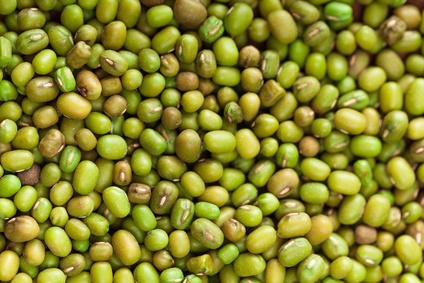Chinese hog growth, rain in South America cause soybean price surge
by February 2, 2023 5:34 pm 1,108 views

Arkansas’ largest crop has been getting a little more valuable as 2023 begins. Soybean prices have trended upward this year due to rising export projections according to the U.S. Department of Agriculture. Rains in Brazil and expanding hog production in China could fuel further price spikes for the crop that is used for livestock feed in many countries.
“The March soybean futures contract is seeing quite a bit of movement this morning,” Hunter Biram, extension economist for the University of Arkansas System Division of Agriculture, said on Tuesday (Jan. 31).
March soybean futures contract prices had been somewhat more volatile in January, with daily closing prices ranging from $14.71 per bushel on Jan. 5, to $15.40 per bushel on Jan. 17. That high price fell to around $15 before the USDA’s figures were published.
“USDA export inspections report came out and had some strong export numbers for soybeans,” he said. “In spite of China being off last week for the Lunar New Year holiday, about 76%of the soybeans inspected last week were headed to China. Additionally, local basis at country grain elevators along the Mississippi River at Helena and Elaine have stayed consistently strong.”
Brazil is the leading soybean producer in the world with about 120 million acres harvested annually. U.S. producers harvest almost 87.2 million acres in 2022, the second most of any country. Arkansas harvested 3.1 million acres last year.
World Grain reported that Brazil is expected to export a record 92 million tonnes of soybeans this year. Heavier than usual rains have impacted the South American country in recent weeks and could impact yield and acres.
According to daily grain bids reports from USDA, basis was 35-cents over the March futures price at the start of the month and has risen to 60-cents over since the start of the week resulting in local cash bids of $15.95 per bushel for old crop soybeans.
The USDA’s Foreign Agricultural Service has revised its global pork production forecast up 3% from the October forecast to 114.1 million tons on higher output in China. FAS said it expected pork demand is expected to strengthen in China due to recently lifted COVID-19 restrictions.
Between the African swine fever outbreak that began in August 2018 and wiped out 40% of China’s sow inventory and lower demand due to COVID-19, the country has been rebuilding its swine inventory. Reuters reported on Jan. 17 that China’s pork output reached 55.41 million tons, the highest level since 2014.
Biram said China’s expanding hog herd “will create demand for soybeans which will be crushed into soybean meal.”
“Keep an eye out for China’s re-opening,” he said, adding that it “will spur demand for food, in general.”
Biram said that while rain in Central America has been beneficial for corn and soybean producers to the south in Argentina and Brazil, rains are delaying soybean harvest.
“As harvest gets delayed, there is an increased risk of loss which has implications for Brazil and its record production year,” he said. “I have seen some data that shows forecasted production in Brazil to be down over previous estimates but still higher than its record 2020-2021 year.”
However, “in general, it appears the market isn’t too concerned about the wet harvest in Brazil thus far,” he said.
Last year the U.S. soybean crop was valued at $45.7 billion, according to the American Soybean Association. American farmers export about 51% of their soybean crops.
China, the leading importer of soybeans, reportedly imported up to 95 million tonnes last year. In December alone, the country imported $7 billion worth, a 30% increase when compared to the same month in 2021, according to Statista.
